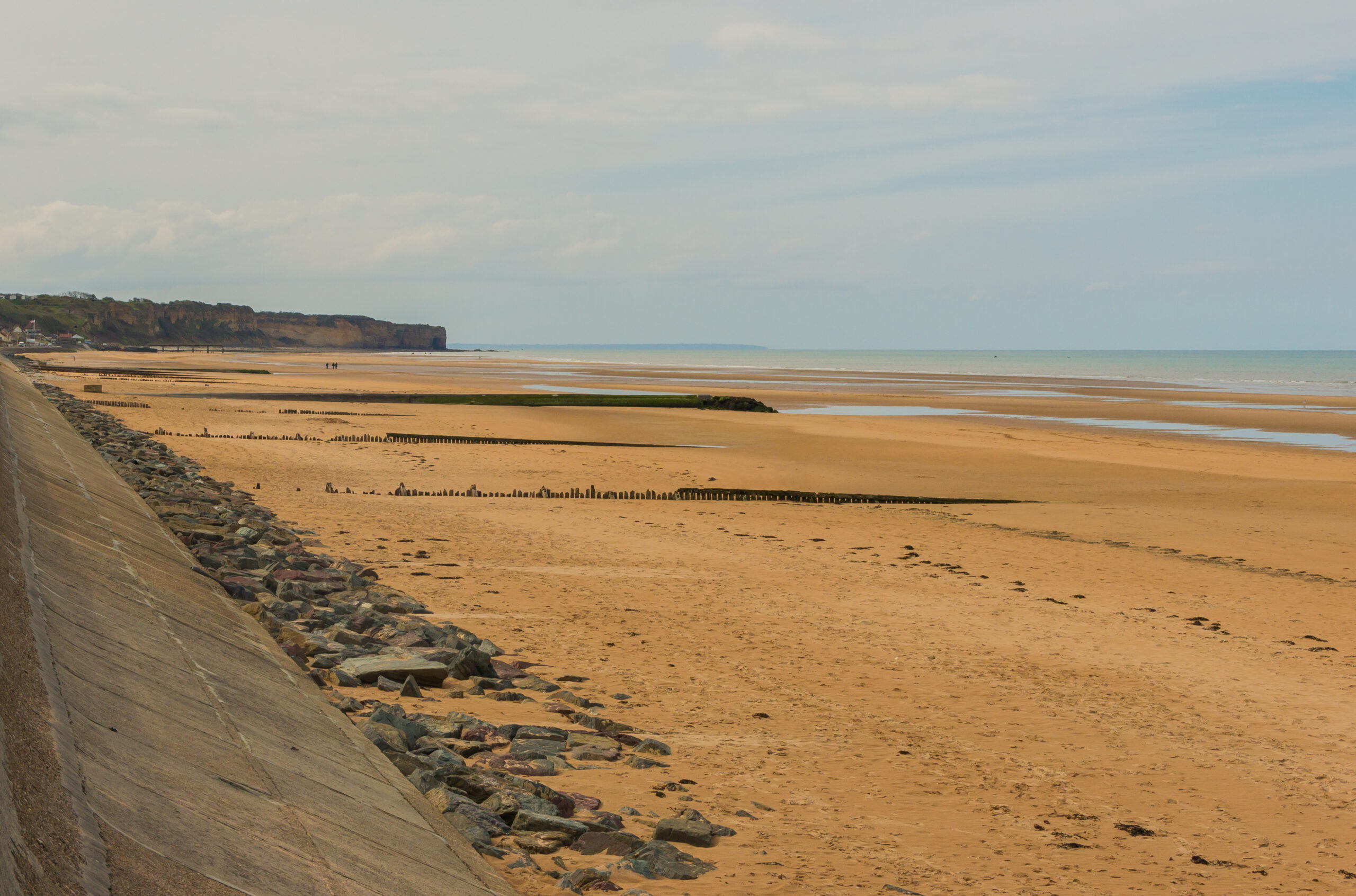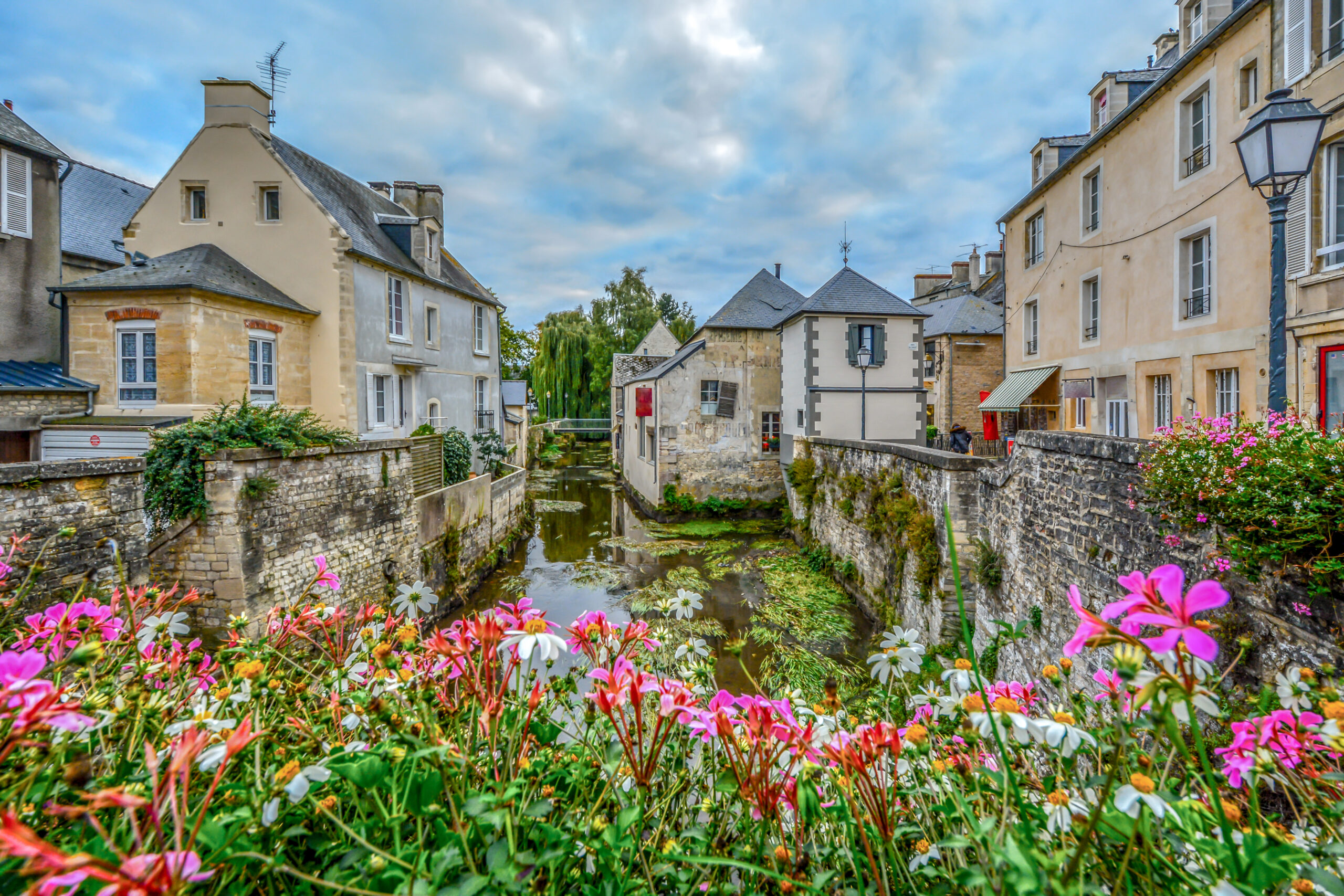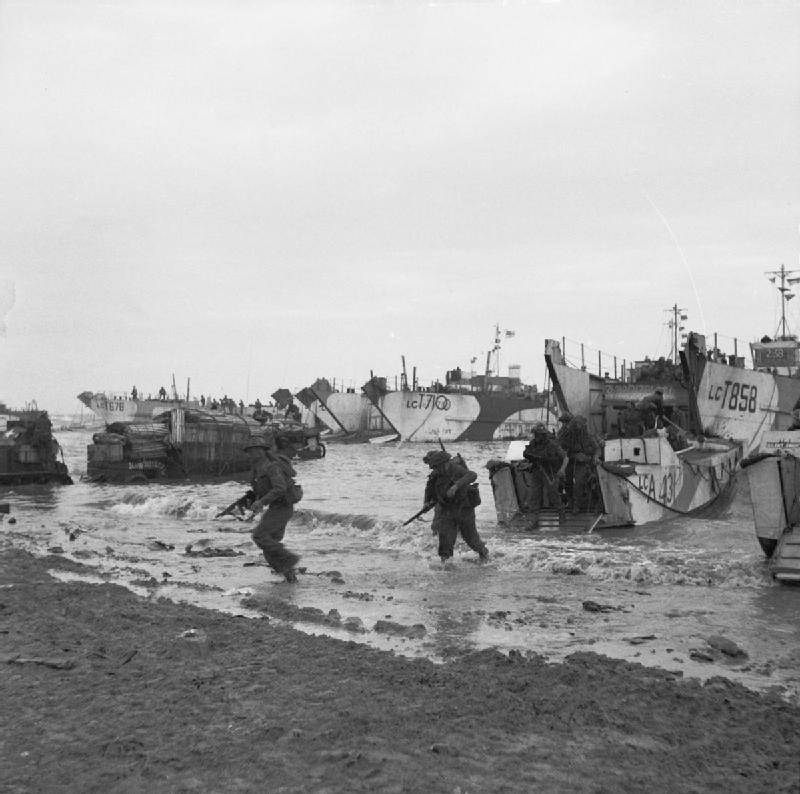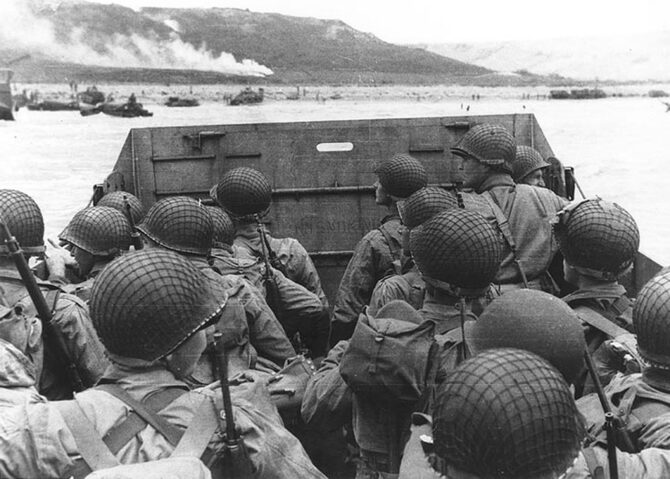A Day Trip to the D-Day Beaches from Caen
A visit to the D-Day beaches in Normandy is a poignant journey through history, and it’s only a ferry trip away. Caen, the largest city in Normandy, serves as an ideal base for exploring the area’s significant WWII sights. Here’s a suggested itinerary for a day trip to the D-Day beaches from Caen.
Brief History
The D-Day landings, also known as the Normandy Invasion, were a pivotal moment in World War II. On June 6, 1944, approximately 160,000 Allied soldiers landed across five beaches in Normandy, France, code named Sword, Juno, Gold, Omaha, and Utah. This massive invasion force, which included U.S., British, and Canadian forces, marked the beginning of the end for Nazi-occupied Europe. The landings were the result of meticulous planning and preparation, and they were a turning point in the war, and it was the largest seaborne invasion in history. The success of the operation was crucial in establishing a beachhead from which the Allies could further push inland into France and ultimately defeat the German forces. The significance of D-Day cannot be overstated, as it altered the course of history and set the stage for the liberation of Europe from Nazi control.
Getting there
Travel from the UK to Caen via an overnight ferry for a convenient and scenic journey. Brittany Ferries operate three daily sailings from Portsmouth to Caen, and their cruise ferries, Mont St Michel and Normandie, provide a comfortable journey of around six hours. Make the most of this crossing to either rest, enjoy the onboard facilities or plan your journey ahead, safe in the knowledge that you are ready to explore the region as soon as you arrive thanks to being able to take your car onboard.

Jebulon – Wikimedia Commons
Itinerary
As the ferry arrives into the harbour at Port De Caen Ouistreham make sure to look west as you are at the easternmost point of the D-Day invasion, with Sword Beach stretching 8 kilometres west to Saint-Aubin-sur-Mer.
1. Le Grand Bunker – Museum of the Atlantic Wall
At Le Grand Bunker, visitors can learn about the Atlantic Wall, a World War II coastal defence system built by the German forces. The museum is located in a well-preserved Nazi bunker near Sword beach, only 900m from the ferry port, meaning you can start learning as soon as you get off the boat. If your ferry arrives before it opens, make sure to take time to walk along the beach which is only a stone’s throw away. Sword Beach, also known as Sword, was the code name for one of the five main landing areas along the Normandy coast during the initial assault phase of the Allied invasion, and it was the responsibility of the British Army. This museum presents a reproduction of the former Atlantic Wall firing command post, allowing visitors to experience and understand the historical significance of the site. It also showcases WWII equipment, memorabilia, and the construction of the Atlantic Wall, providing an immersive experience in history.
2. Juno Beach Centre, Courseulles-sur-Mer
Approximately 30 minutes by car along the coast from Ouistreham, this museum and cultural centre pays homage to the 45,000 Canadians who lost their lives during the Second World War, with a specific focus on the 14,000 Canadian troops who landed on D-Day at Juno Beach, and the 5,500 who were killed during the Battle of Normandy. The museum provides an interesting and well-laid-out perspective on the D-Day landings, and offers tours of the bunkers and beach given by young Canadians, making it a compelling and educational experience for visitors. As the only Canadian museum focusing on the Normandy Landings, it offers a unique opportunity to learn about Canada’s significant contribution to the events of D-Day.
3. Musée du Débarquement – D-Day Museum in Arromanches
Make sure to stop and pay your respects at the British Normandy Memorial in Ver-sur-Mer on your way to the Musée du Débarquement in Arromanches. This museum, located at the exact point where the Allies established one of the two artificial ports used to supply the troops, offers a comprehensive experience for visitors. Since 2023, the museum features a new museography, with the tour divided into seven parts, including a British Admiralty film, a model gallery, and rooms dedicated to various aspects of the D-Day landings and the Battle of Normandy. The museum provides a 90-minute guided tour, and visitors can also explore the ruins of the artificial Mulberry harbour and the monuments near the site.
4. Lunch in Bayeux

Shutterstock
Just 12km south, you’ll be in the beautiful medieval town of Bayeux, which is known for its rich history and well-preserved architecture. The town is home to the famous Bayeux Tapestry, a UNESCO-listed masterpiece that depicts the Norman conquest of England. Bayeux’s historical significance is further highlighted by its status as the first town to be liberated in June 1944 during World War II, making it an ideal base for exploring the nearby D-Day landing beaches and other related sites. The town’s narrow cobbled streets, historic centre, and a variety of events and attractions, such as the Bayeux Medieval Festival, offer a delightful experience for history enthusiasts and tourists alike. Stop here for a bit of lunch before you head on with your journey.
5. Omaha Beach
A 25-minute drive west and you’ll arrive at Omaha Beach, the site of one of the most significant landings during the Normandy Invasion. It was the most heavily defended of the assault areas, with U.S. forces suffering the worst casualties of any beach on D-Day, totalling 2,400 soldiers. Despite the challenges, by nightfall, 34,000 Allied troops had landed. One interesting fact is that the beach was the setting for the daring seaborne assault by U.S. Army Rangers on Pointe du Hoc, a promontory west of the landing beach. The successful capture of this strategic point was a remarkable feat of bravery and skill. The events at Omaha Beach were depicted in the movie Saving Private Ryan, which brought renewed attention to the significance of this historic site.
6. Normandy Victory Museum – Musée de la bataille des haies
Keep driving west, if you have time stop at the La Cambe German War Cemetery to see how the German soldiers that were killed during the war are remembered, and head to the Normandy Victory Museum in Carentan. It offers a compelling journey through a collection of over 15,000 authentic objects, making it a must-see museum in the region. The museum is accessible to visitors of all ages and provides an opportunity for everyone to learn and enhance their knowledge of the Second World War, particularly the D-Day landings and the Battle of Normandy.
7. D-Day Experience
D-Day Experience is a historical site on the other side of Carentan that offers a unique and immersive experience combining education and entertainment. The site, spanning 10,000 m2, features two museums, a 3D movie theatre, a flight simulator, and a memorial dedicated to the airborne troops. The experience provides a double perspective of the events of the D-Day, allowing visitors to not only learn about history but also live it through modern and immersive museography. The site is designed to appeal to all the senses and offers a comprehensive understanding of the D-Day events through authentic artefacts and interactive displays.
8. Richard Winters Memorial – Band of Brothers

Less than 15 minutes from D-Day Experience, in the direction of Utah beach, you’ll find the Richard Winters Memorial, a tribute to Major Richard D. Winters, who led paratroopers from Company E, 2nd Battalion, 506th Parachute Infantry Regiment, 101st Airborne Division, during the D-Day landings. The memorial, unveiled in 2012, is a 12-foot-tall statue of Winters, located on the D913 between Sainte-Marie-du-Mont and Utah Beach. It is dedicated to the memory of all junior U.S. military officers who served on D-Day and honours the leadership of Winters and his fellow officers during the historic event. Winters’ leadership and bravery during the D-Day landings and the subsequent campaign in Europe inspired the book and television miniseries Band of Brothers, which brought his remarkable story to a wider audience.
9. Utah beach and World War II Museum
Head northwest along the coast and you can reflect on that historical date when the soldiers stormed the beaches to your right, before reaching Quinéville where the World War II Museum regales the tales on an individual scale. It offers a chronological path through the Second World War in Normandy, featuring lively scenes, life-size reconstructions, propaganda posters, photographs, videos, dioramas and a recreated street.
10. Caen Memorial Museum
Then it’s an hour’s drive back to Caen, during which you can listen to a podcast and learn more about D-Day history or sit in silence and reflect on the sites you’ve seen. Conclude your day with a visit to the Caen Memorial Museum, which provides a comprehensive understanding of the events leading up to and following the D-Day landings. The museum’s exhibits and artefacts offer a profound insight into the scale and impact of the war, and it’s considered one of the best World War II museums in France.
A day trip to the D-Day beaches from Caen offers a compelling and educational experience, allowing you to pay homage to the bravery and sacrifice of the Allied forces during the pivotal events of World War II.
Benefit from the three daily sailings from Portsmouth with Brittany Ferries to discover Caen and the Normandy beaches.
On the 80th anniversary of D-Day, delve into the captivating world of wartime espionage and deception as France Today explores the intriguing Double Cross System, a covert operation that played a pivotal role in the Allied victory during World War II.
Lead photo credit : Wikimedia Commons
Share to: Facebook Twitter LinkedIn Email






